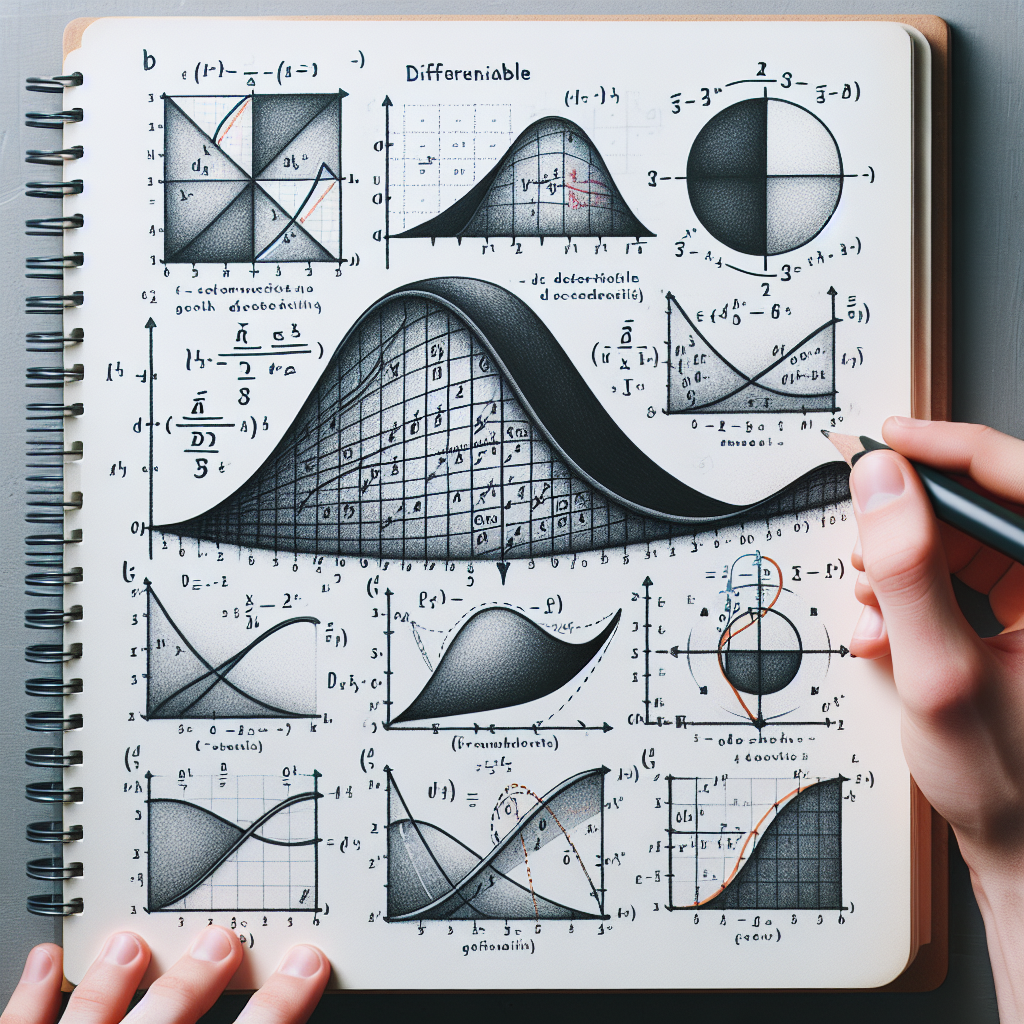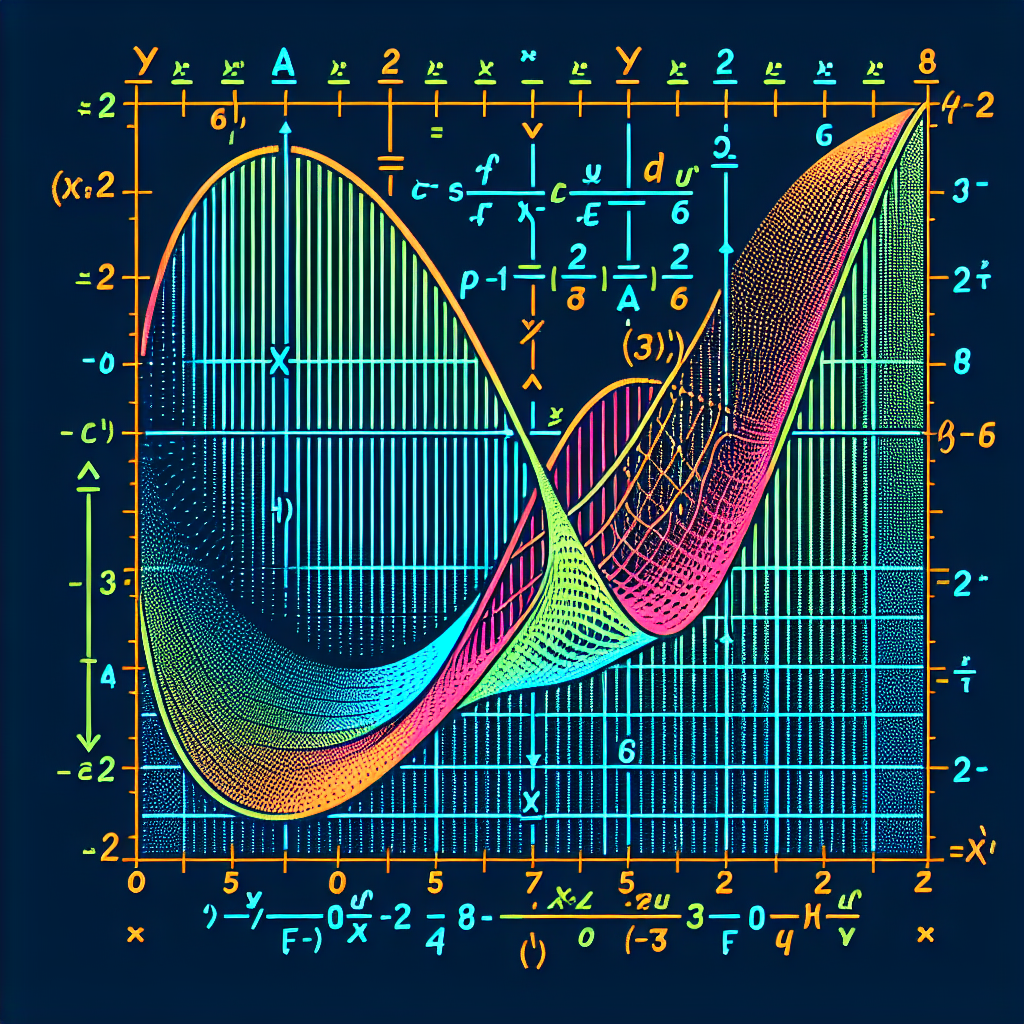Differentiable Functions: A Comprehensive Guide
Differentiable functions are a cornerstone of calculus. They play a crucial role in many areas of mathematics and its applications.
But what exactly is a differentiable function? How can we determine if a function is differentiable or not?
These are some of the questions we will answer in this comprehensive guide. We will delve into the concept of differentiability, explore its properties, and discuss its applications.
Whether you are a student, an educator, or a professional, this guide will help you understand differentiable functions. It will provide you with the knowledge you need to tackle problems involving these functions.
So, let’s embark on this journey of understanding differentiable functions. Let’s unravel the mysteries of calculus together.
Understanding Differentiable Functions
Differentiable functions are a fundamental concept in calculus. They are functions that have a derivative at every point in their domain.
But what does it mean for a function to have a derivative? It means that at any given point, we can find the slope of the tangent line to the function’s graph. This slope is the derivative of the function at that point.
The concept of differentiability is closely related to the concept of continuity. But not all continuous functions are differentiable.
What Makes a Function Differentiable?
A function is differentiable at a point if it has a derivative at that point. This means that the function is smooth and without any sharp corners or cusps at that point.
The derivative of a function at a point gives us the rate of change of the function at that point. It tells us how the function is changing at that particular point.
For a function to be differentiable at a point, it must be continuous at that point. But the converse is not true. A function can be continuous at a point but not differentiable at that point.
Differentiability and Continuity: The Connection
Differentiability and continuity are two fundamental concepts in calculus. They are closely related but not the same.
A function is continuous at a point if the limit of the function as it approaches that point exists and is equal to the value of the function at that point. This means that the function does not have any jumps, breaks, or holes at that point.
Differentiability is a stronger condition than continuity. If a function is differentiable at a point, it is also continuous at that point. But a function can be continuous at a point and not be differentiable at that point. For example, a function with a sharp corner at a point is continuous but not differentiable at that point.
Exploring the Graphs of Differentiable Functions
The graph of a differentiable function is smooth and without any sharp corners or cusps. This is because the derivative of the function, which gives the slope of the tangent line to the function’s graph, exists at every point.
The graph of a differentiable function can provide a lot of information about the function. For example, it can tell us where the function is increasing or decreasing, where it has local maxima or minima, and where it has inflection points.
The Graph of a Twice Differentiable Function
A function that is twice differentiable is a function whose derivative is also differentiable. This means that we can take the derivative of the function twice.
The graph of a twice differentiable function is not only smooth but also has a continuous second derivative. This means that the rate of change of the slope of the function’s graph is continuous.
The second derivative of a function gives us information about the concavity of the function. If the second derivative is positive at a point, the function is concave up at that point. If the second derivative is negative at a point, the function is concave down at that point.
The points where the second derivative changes sign are called inflection points. At these points, the function changes its concavity. The graph of a twice differentiable function can help us identify these inflection points.
How to Determine Differentiability
Determining whether a function is differentiable involves checking if the derivative of the function exists at every point in its domain. This is done by using the limit definition of the derivative.
If the limit exists and is finite, the function is differentiable at that point. If the limit does not exist or is infinite, the function is not differentiable at that point.
The process of checking differentiability can be complex, especially for functions that are defined piecewise or have discontinuities. In such cases, we need to examine each piece of the function separately.
Using Limits to Test for Differentiability
The limit definition of the derivative is a powerful tool for testing differentiability. It involves taking the limit as h approaches 0 of the difference quotient of the function.
This limit gives the slope of the tangent line to the function’s graph at a given point. If this limit exists and is finite, the function is differentiable at that point.
However, if the limit does not exist or is infinite, the function is not differentiable at that point. This usually happens when the function has a sharp corner, a cusp, or a discontinuity at the point.
It’s important to note that differentiability is a local property. A function can be differentiable at some points and not differentiable at others.
The Role of Derivatives in Differentiability
The derivative of a function plays a crucial role in determining its differentiability. By definition, a function is differentiable at a point if its derivative exists at that point.
The derivative of a function gives the slope of the tangent line to the function’s graph at a given point. This slope represents the rate of change of the function at that point.
If the derivative of a function exists at every point in its domain, the function is differentiable on its entire domain. This means that the function’s graph is smooth and has no sharp corners or cusps.
However, if the derivative does not exist at a point, the function is not differentiable at that point. This usually happens when the function has a sharp corner, a cusp, or a discontinuity at the point.
In conclusion, the derivative is a powerful tool for studying the differentiability of functions. It not only tells us where a function is differentiable, but also gives us information about the function’s behavior at the points of differentiability.
Real-World Applications of Differentiable Functions
Differentiable functions are not just abstract mathematical concepts. They have numerous applications in the real world. From physics to economics, differentiable functions play a crucial role in modeling and understanding various phenomena.
In engineering and physics, differentiable functions are used to describe the motion of objects, the flow of fluids, and the propagation of waves, among other things. They are also used in the formulation of physical laws and principles.
In economics and machine learning, differentiable functions are used to model rates of change and to optimize complex systems. They are also used in the development of algorithms and numerical methods.
Differentiable Functions in Engineering and Physics
In engineering and physics, differentiable functions are indispensable. They are used to model the behavior of physical systems and to solve problems involving motion, forces, energy, and waves.
For example, the motion of a projectile thrown into the air can be modeled using a differentiable function. The derivative of this function gives the velocity of the projectile at any given time.
In fluid dynamics, differentiable functions are used to describe the flow of fluids. The derivatives of these functions give the velocity and acceleration of the fluid particles.
In wave mechanics, differentiable functions are used to describe the propagation of waves. The derivatives of these functions give the speed and direction of the wave propagation.
In conclusion, differentiable functions play a crucial role in engineering and physics. They provide a mathematical framework for describing and understanding the physical world.
The Importance of Differentiability in Economics and Machine Learning
In economics, differentiable functions are used to model rates of change in cost, revenue, and profit. The derivatives of these functions give the marginal cost, marginal revenue, and marginal profit, which are important concepts in economic analysis.
In optimization problems, differentiable functions are used to find the maximum or minimum values of a function. The derivatives of the function are used to find the critical points, where the maximum or minimum values occur.
In machine learning, differentiable functions are used in the development of algorithms for training and optimizing models. The derivatives of the loss function, which measures the error of the model, are used to update the model parameters and minimize the error.
Differentiable functions are essential tools in economics and machine learning. They provide a mathematical framework for modeling and optimizing complex systems.
Advanced Concepts in Differentiability
Differentiability is not just a binary concept. A function can be differentiable more than once. This leads to the concept of higher-order derivatives and their significance in understanding the behavior of functions.
Twice differentiable functions, for instance, have a second derivative. This second derivative provides additional information about the function, such as its concavity and inflection points.
Higher-order derivatives extend this concept further. They provide deeper insights into the function’s behavior and have applications in various fields of study.
Twice Differentiable Functions and Concavity
A function is said to be twice differentiable if its derivative is also differentiable. This means that the function has a second derivative.
The second derivative of a function provides information about its concavity. If the second derivative is positive, the function is concave up. If it’s negative, the function is concave down.
The points where the second derivative changes sign are called inflection points. At these points, the function changes its concavity.
Twice differentiable functions provide more detailed information about the function’s behavior. They are particularly useful in understanding the function’s concavity and inflection points.
Higher-Order Derivatives and Their Significance
Higher-order derivatives are the derivatives of the derivative of a function. They provide even more detailed information about the function’s behavior.
The third derivative of a function, for instance, gives information about the rate of change of the function’s concavity. This is often used in physics to describe the jerk of a moving object.
The fourth derivative, also known as the jounce, describes the rate of change of the jerk. And so on for higher-order derivatives.
Higher-order derivatives provide deeper insights into the function’s behavior. They are particularly useful in fields of study that require a detailed understanding of the function’s behavior, such as physics and engineering.
Differentiable functions are a cornerstone of calculus. They provide a mathematical framework for understanding change and rates of change, which are fundamental concepts in many fields of study.
From the basic definition of differentiability to the concept of higher-order derivatives, differentiable functions offer a wealth of information about the behavior of functions. They are indispensable in fields ranging from physics and engineering to economics and machine learning.
In conclusion, understanding differentiable functions is crucial for anyone studying or working in a field that involves calculus. They provide the tools necessary to model and analyze change, making them a vital part of modern mathematics and science.












![Accounting Course in Delhi, 110047, [GST Update 2024]](https://free-ads.marketing2advertising.com/wp-content/uploads/2024/07/Accounting-Course-in-Delhi-1-300x224.png)


